Punset, meaning little mountain or small peak, is the name of the hill where Marina Marcarino’s famed organic vineyards and winery is located. Officially called San Cristoforo the Court of Neive gave name to this hill as it was the only hill he could see from his castle standing above the fall and winter fog. Standing at 300 meters (984 feet) the hill is anything but little. Neive hosts the highest altitudes in Barbaresco and Punset is one of the highest.
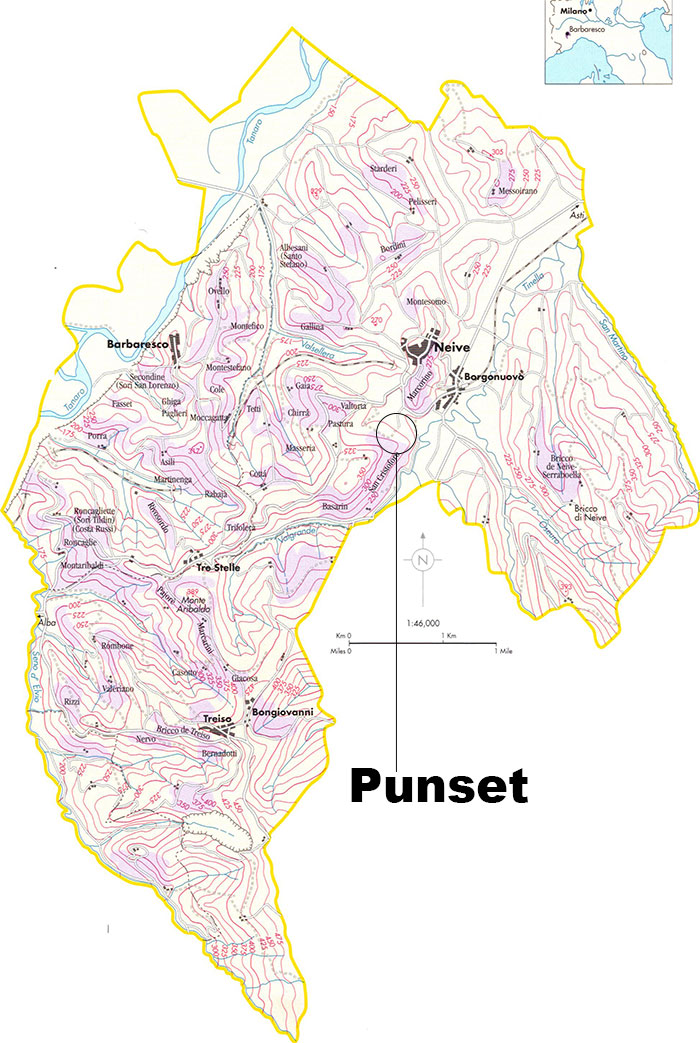
The commune of Neive sits at the highest altitude of any of the Barbaresco communes and its higher-altitude vineyards tend to produce more perfumed grapes with firmer tannic structures.
The Marcarino family has owned 17ha on this one single hill for over a century beginning with Marina’s great-grandfather. Wine was always a hobby for Marina’s father and grandfather, a way to make extra money during their day-to-day construction business. With their construction roots, Marina was destined to become an engineer but her heart was elsewhere. Marina’s grandmother always brought her into the vineyard as a young child and while growing up. She became very attached to the vines, a passion that would lead her for the rest of her life.
Marina Takes Over and the Transition to Organics
Trained in viticulture, Marina took over the vineyards in 1982 and immediately started the conversion to organics. Even before she took reins the vines were never sprayed with herbicides or pesticides as her grandfather and father “didn’t like the idea.” Punset was the first experimental field by the University of Turin on organics in the Piedmonte region.
The first year was very difficult. The vines were not prepared for the absence of everything they were used to receiving. They were very stressed, ultimately losing 70% of their total production. Marina’s family was disappointed, and rightfully. She was young, under 20, and at the time the farm was an extra source of money. Neighbors were saying, “the crazy girl who was destroying the family property by using different methods and losing 50% average production in the vineyards.” To Marina, the loss of 70% in yields were a sign that the plants were taking in something that goes into our body that shouldn’t have been there. “Eat and drink chemicals everyday.” Marina states.
After 3 years the vineyards had completely changed. Grass grows up to 60cm tall to help retain warmth during the fall. Many kinds of flowers and wild grasses including mint, violet and chamomile grow throughout the property. Marina macerates the wild grass in water for weeks and transforms the mixture into a spray to keep insects away. The animal chain changed from non-existent to “a little too much sometimes… just a different approach.” she says. The vines are no longer afraid of rains or infection, as this should be natural. Retiring in 1990, Marina’s father started to work in the vineyards and enjoy the ideas of his daughter.
In the entire Piedmonte area, below 1% of all production work organically. In the commune of Neive there is only 1 organic producer, 2-3 in Barolo and 4-5 in the Langhe. More producers are converting as it becomes more in fashion, though they are more-so experiments on 1ha of a separate plot in fear of losing any of their production. According to Marina, organics and modern styles conflict. Marina received organic certification in 1993 which she states is more difficult than non-certified vineyards and natural wines. There are strict controls and inspections in her vineyards. As in 2013, which was a very wet year, some “organic” producers may opt to spray but certified organic vineyards would not be allowed.

Punset location of vineyard and winery. You can easily see her vineyards are the only green vineyards.
From Vineyard to Bottle
All of Marcarino’s plots are tied to one unique hill with many different sections. Position and exposure showing the differences. Exposure in Barbaresco is most important in the fall. Nebbiolo needs south-facing slopes as there can be up to 20-degree Celsius diurnal temperature swings. Soils are all very similar on her hill. Campo Quadro being the most different with the highest altitude and a higher rock level only 50cm deep.
Marina’s style is to express terroir and elegance. Her wines are “round, elegant, well balanced with a deep sensation of aroma and aftertaste.”
The skins of Barbera can easily burn on south-facing slopes and can produce overcooked, overripe fruit and jammy wines. Barbera produces very different results depending on how you work the vineyard. It’s strong acidity and plenty of fruit lends to many types of vinification (fresh, wood, residual sugar, and even sparkling). It creates wines are should be charming, pleasant and drinkable. Barbera can be picked early due to its high acidity and will easily go into malolactic fermentation.
Nebbiolo is more complicated and more particular. She prefers poor soil, and better quality with less fruit per vines. Nebbiolo vines start producing best quality fruit after 10-15 years old. In terms of the actual berry, Nebbiolo and Pinot Noir look very similar. Marina’s Nebbiolo sometimes has to wait until the following summer to start malolactic fermentation.
Grapes are hand-harvested as mechanization is impossible on her slopes. Grapes are immedietly pressed. All spontaneous fermentation with natural yeasts.
Punset Arneis 2013 Langhe DOC
Marina’s white is made without skin contact. As the grapes are harvested and brought into the winery the first small amount is pressed and taken back into the vineyard via tank. Fermentation then starts in the vineyard. Fermentation is more difficult with the whites as there is less of a population of yeasts. Marcarino emphasizes the importance of operating all in one place, a harmony between growing and production. While fermentation starts, the rest of the Arneis grapes are pressed. Pressed juice is added little by little to the fermentation tank so there is never a stuck fermentation. Stainless steel is used throughout the process.
Tasting
Clear and bright, medium lemon gold color. Moderate plus intense in aroma and very complexed. Aromas of candied lemon zest, gala apple, green apple, lemon curd, chamomille, acacia florals, strong notes of herbs (dill, fennel, mint), herbaceous aromas of grass, and ample amounts of steely minerality. On the palate medium plus round and mouthcoating body with matching lemon acidity. Flavours translate well from the nose with the gala apple, lemon zest, and florals showing through more including a little white pepper. Marina’s Arneis is very well-balanced, extremely complexed, with a long-lasting finish. My only negetive would be the high alcohol.
The Reds
Unlike Marina’s Arneis, once the reds are pressed they are already fermenting. There is no need to bring a small batch into the vineyard to begin fermentation. Marina has a strong opinion on concrete, and all of her reds are fermented in this vessel. She states, the iron quantity is lower than compared to stainless steel thus creating a lower magnetic field. Fermentation in stainless steel can be faster because temperatures increase more quickly unless you have temperature-control. Concrete heats very slowly thus the wine is never shocked. Wine produced in stainless steel can be shocked multiple times as the tank becomes hot and cold very quickly. Marina states that wine fermented in concrete always shows younger, even 10 years later, are more alive and more charming. Where did Marina purchase 500,000L concrete tanks weighting 5,000 kilos empty each? From her neighbors of course who were throwing them away!
Punset Barbera d’Alba 2013 DOC
Tasting
Clear and bright on the appreance, medium plus intensity, and purple in colour. Aromatic on the nose (medium +) with ripe red fruits, bramble, spicy currant, medicinal herbs, mint and violets. Medium body and youthful. Elevated acidity (medium +) integrates well with the fine-grained medium tannins. Flavours of ripe red fruit almost turning black with bramble, currrants and violets. Wine shows elegance from a high-altitude site with flavours and mouthfeel lasting quite long (medium +).
Punset Barbaresco 2009
Marina’s Barbaresco is made in concrete and aged in Solvenia cask of 2,500L in size. The size is very important as it balances quantity of wine in surface with the oak. Her Barbaresco always sees at least 18 months then longer depending on vintage, sometimes up to 3 years. It is a wine that can stand this kind of long ageing. Marina always ages in bottle the same time as wood ageing. She states the wine is stressed at bottling so it needs the same amount of time in bottle to return the wine to it’s previous relaxed position.
Tasting
The appreance is clear, pale intensity, garnet in colour with bright red undertones. Highly expressive with rose, florals, red cherry (slightly baked), spice box, animal, and farmhouse. The palate shows definitive elegance despite its high grippy tannins. The grip is balanced by high acidity and high intensity of flavours all translating from the nose. Alcohol is well integrated (medium +). The wine is highly structured, clean and tastes natural.
Punset Barbaresco Campo Quadro 2004
Campo Quadro is one of two of Marina’s single-vineyard bottlings. Mentioned earlier, the soil in this plot is completely different. The vines are the highest in the area and the rock level is closer to the surface, only 50cm deep. This creates a wine with more structure and hasher tannins. 2004 is the current release (as of September 2014).
Tasting
The appearance is clear, darker in intensity compared to the Barbaresco (medium), ruby in color in the core leading to garnet rim. Sweet spice and tobacco balances with red cherry and currant with elegant developing notes of animal, hay and tar. Slight menthol and herbaceous underlying. Medium plus body withe medium plus grippy tannins but more polished from the new oak. Initially sweet spice and oak show but ripe red fruits last in the long finish. Can be drank now, but could stand a few years to develop. Poured via Coravin, Camp Quadro would benefit from extended decanting.
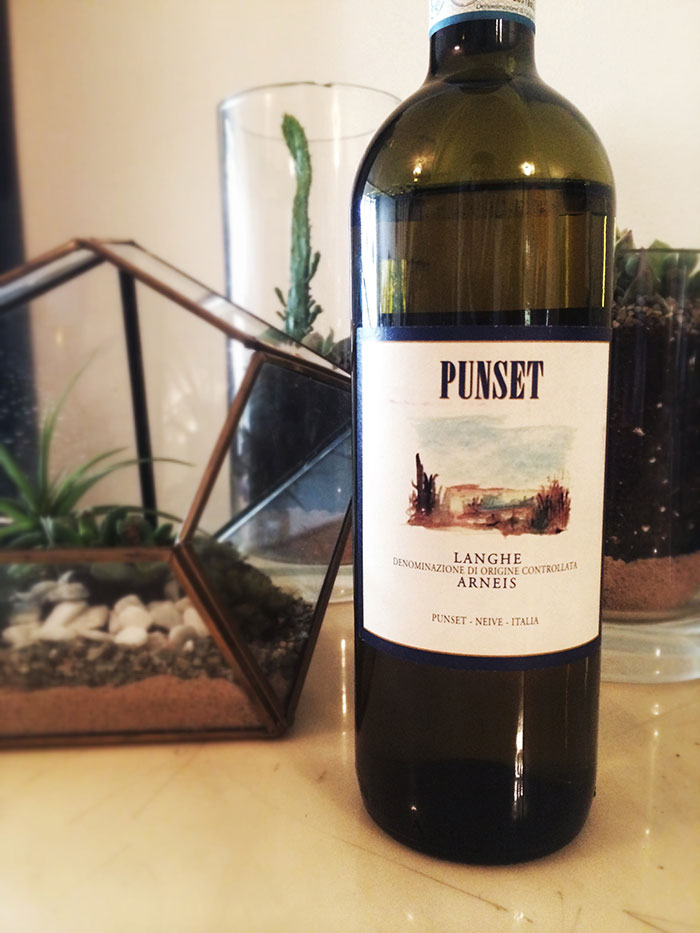
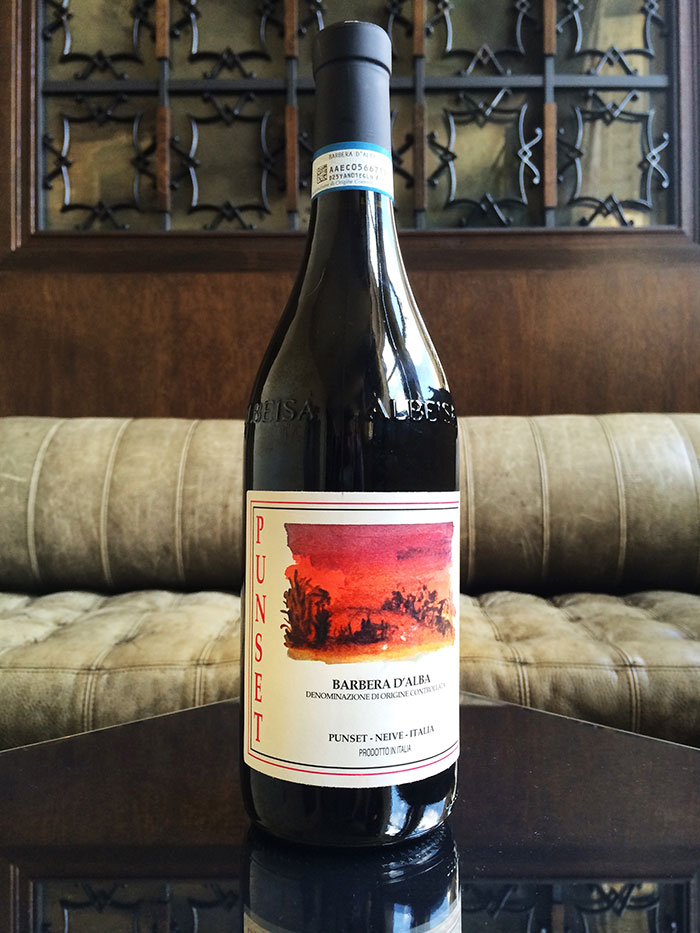
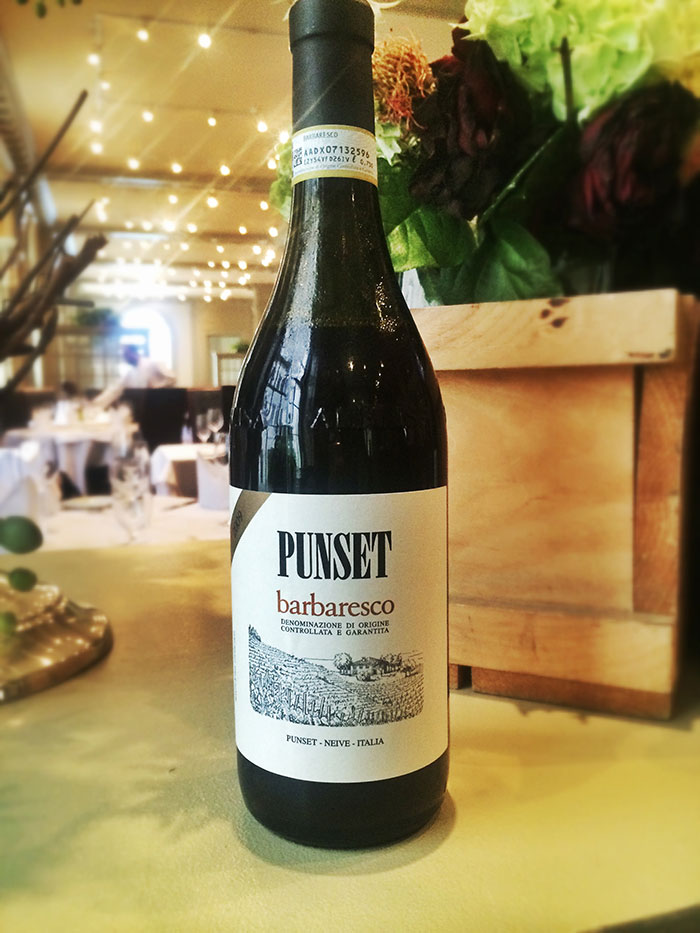
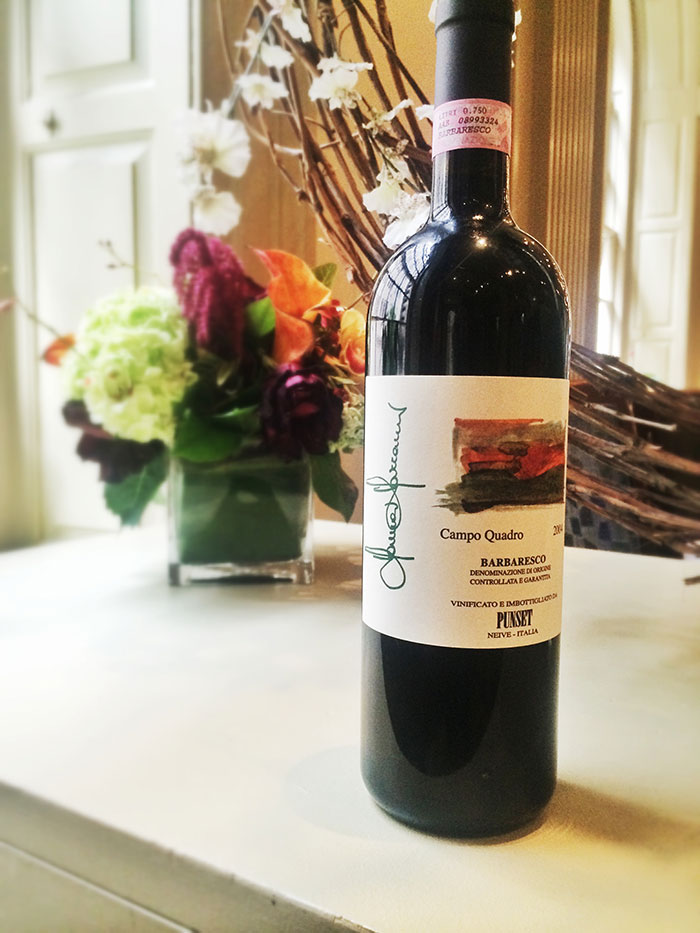
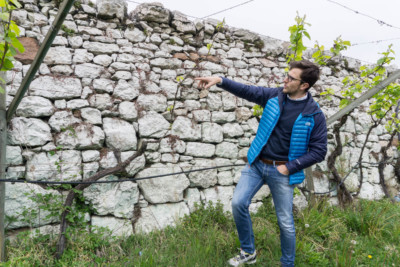

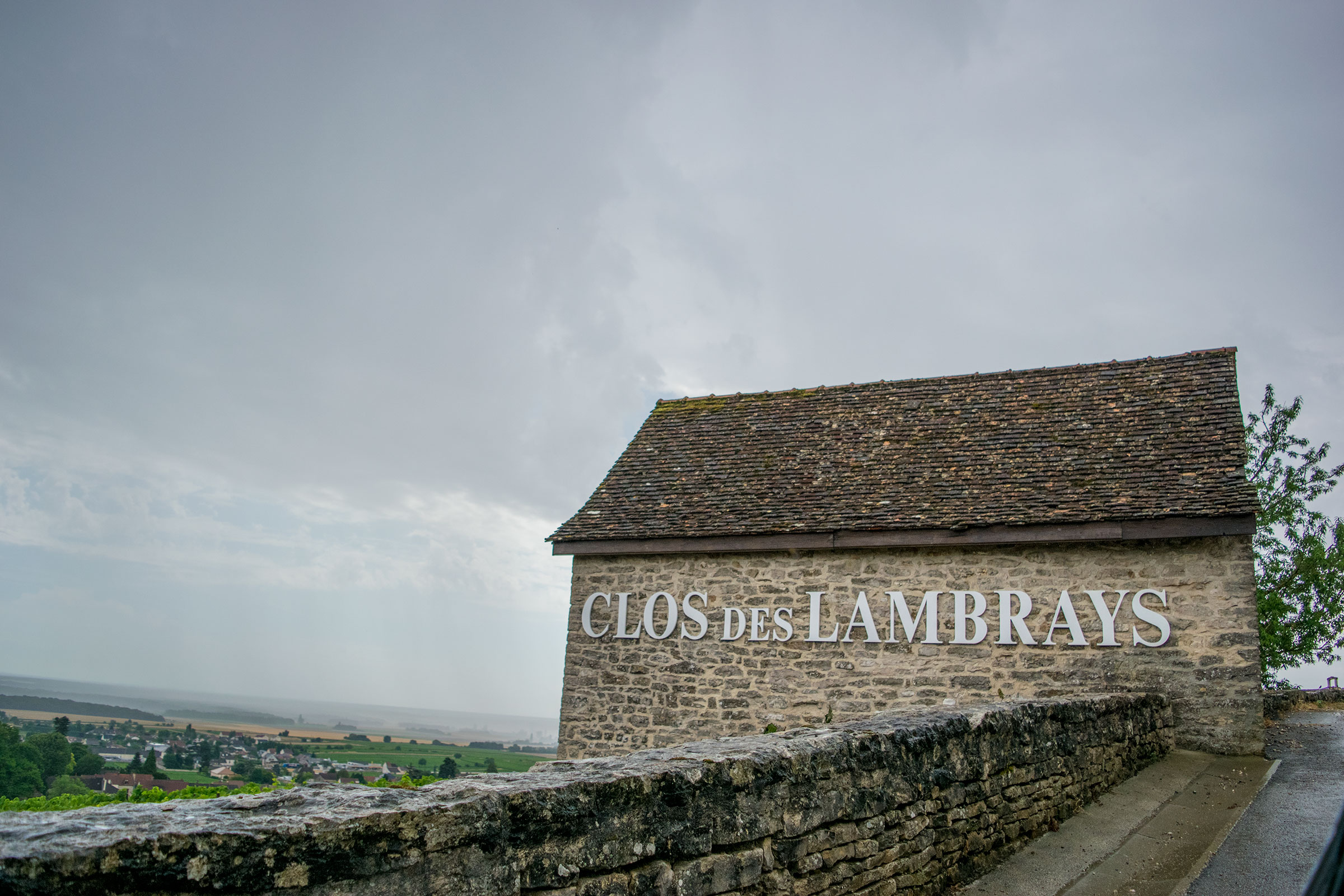
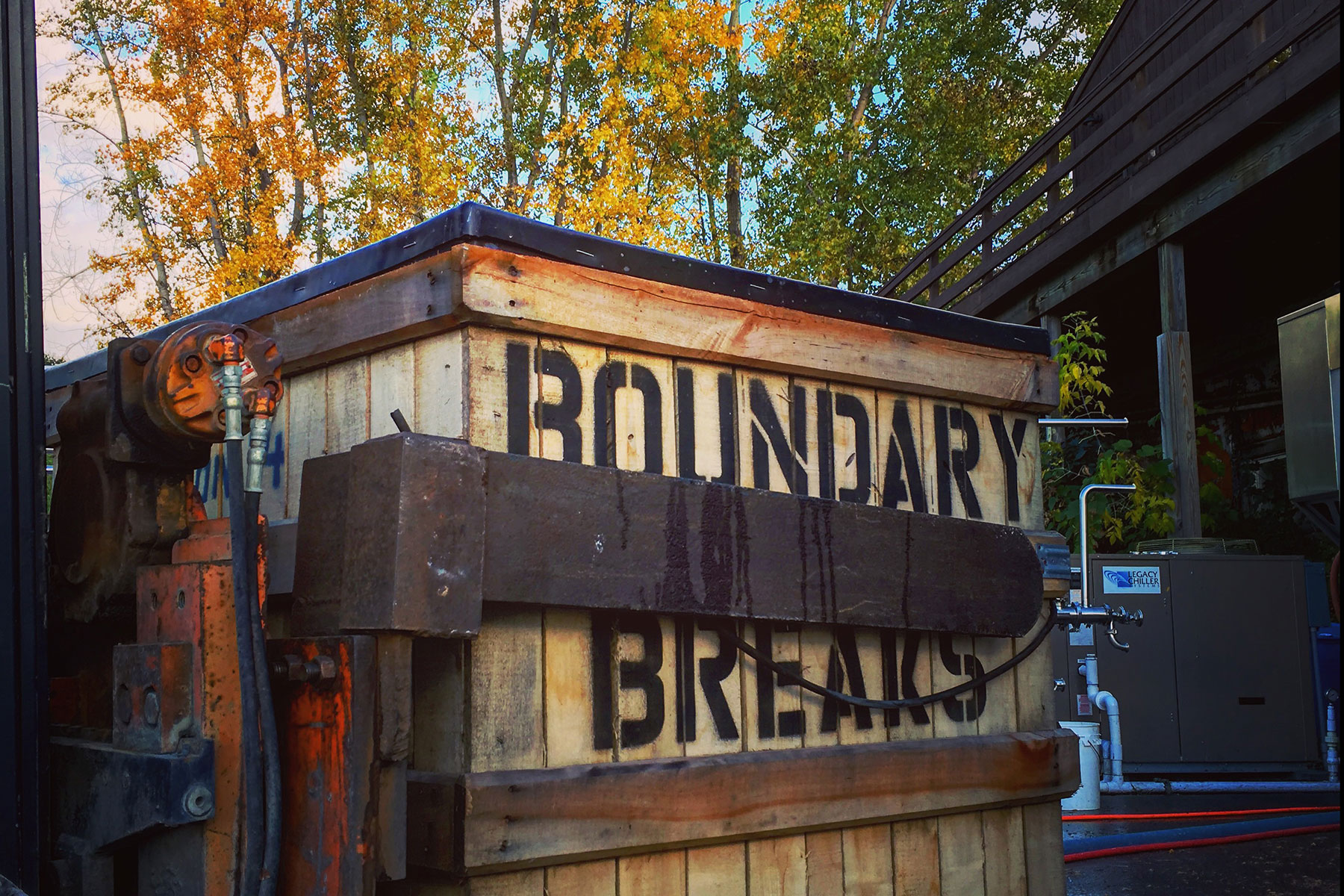
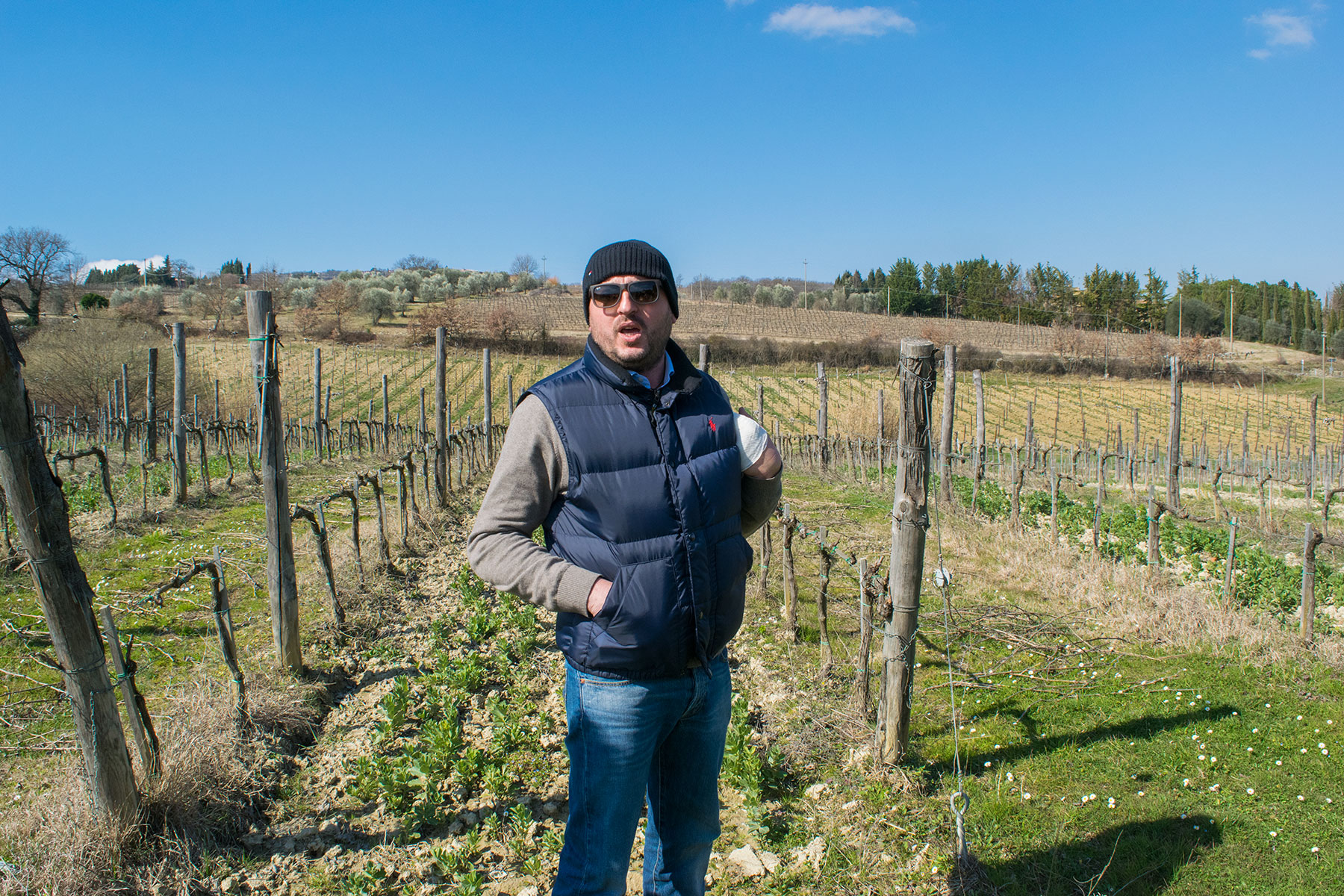
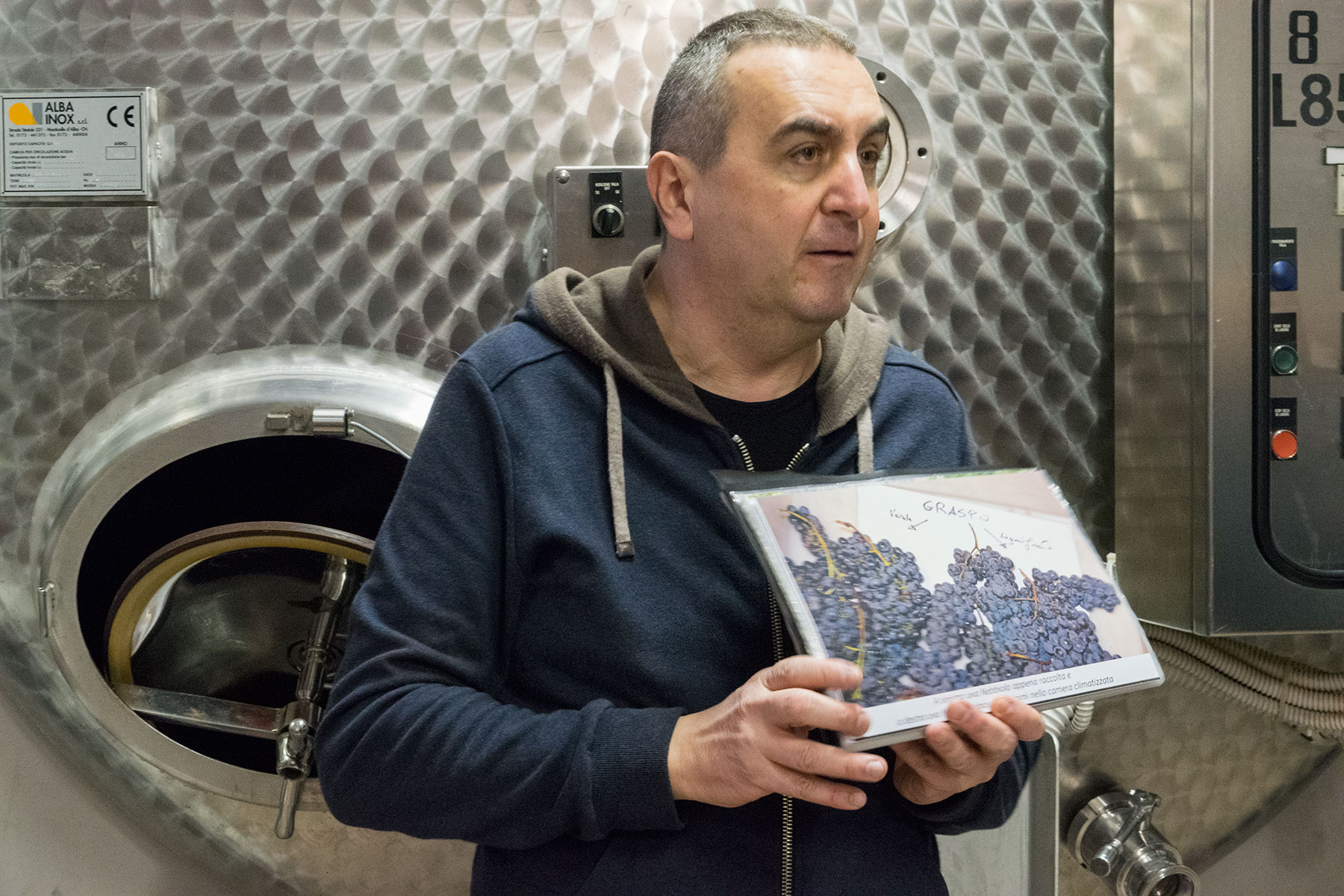
Leave A Comment
You must be logged in to post a comment.